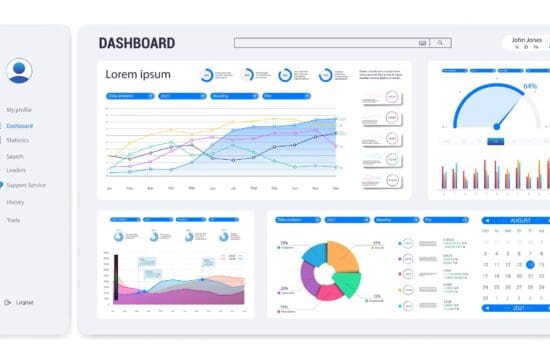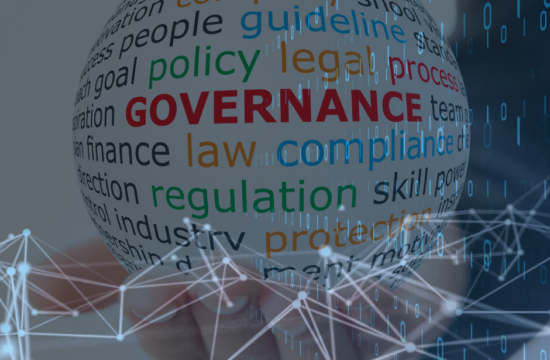In today’s fast-paced technological landscape, the intersection of AI, data security, and compliance has become a focal point for enterprises aiming to leverage AI’s capabilities while safeguarding sensitive information. Understanding the critical aspects of data governance in AI is essential, including strategies, challenges, and best practices for ensuring robust data security and compliance.
The Role of Data in AI
Data serves as the backbone of AI development. Understanding the type, structure, and sensitivity of data is paramount for building reliable AI models. Modern data discovery and classification tools are essential for accurately connecting and categorizing data. This foundation enables companies to identify which data is relevant to their AI applications, such as customer support chatbots, and ensures that AI systems operate on high-quality, pertinent information.
Privacy and Security by Design
Embedding privacy and security into the design and deployment of AI systems is crucial for maintaining transparency and accountability. The concept of “privacy by design” involves integrating privacy measures from the outset, rather than as an afterthought. This approach not only protects sensitive data but also builds trust with users. Organizations should layer technology tools with a deep organizational understanding, engaging all stakeholders—from privacy and security teams to product managers and engineers—to create a cohesive strategy for data governance.
Key Elements of Privacy and Security by Design:
- Integration from the Start: Incorporate privacy measures during the initial design phase.
- Stakeholder Engagement: Involve privacy and security teams, product managers, and engineers.
- Transparency: Ensure that data handling practices are clear and transparent to users.
Safeguarding Sensitive Data
Protecting sensitive data against breaches and unauthorized access is a core consideration. AI systems often handle various types of data, including structured, unstructured, and semi-structured datasets. Effective data governance requires advanced tooling to classify and manage these datasets accurately. Moreover, anonymizing personal information and handling user identities responsibly are key steps in minimizing risks. Aligning data handling practices with legal regulations and industry standards ensures compliance and mitigates potential legal implications.
Strategies for Safeguarding Sensitive Data:
- Data Classification: Use advanced tools to classify and manage datasets.
- Anonymization: Anonymize personal information to minimize risk.
- Compliance Alignment: Align practices with legal regulations and industry standards.
Automation in Data Governance
The need for automation in data governance cannot be overstated. Manual data inventory and mapping are no longer feasible due to the sheer volume and complexity of data. Automated tools are essential for real-time discovery, classification, and monitoring of data changes. Such tools enable organizations to stay ahead of data drift—a common challenge where data constantly evolves, making it difficult to maintain consistent governance. By leveraging AI to monitor AI, companies can achieve a higher level of accuracy and efficiency in their data governance practices.
Benefits of Automation in Data Governance:
- Real-Time Discovery: Automatically discover and classify data in real time.
- Continuous Monitoring: Monitor data changes to stay ahead of data drift.
- Efficiency: Increase accuracy and efficiency by automating governance tasks.
Legal and Regulatory Landscape
Navigating the ever-evolving legal landscape is a significant challenge for organizations integrating AI. Monitoring legal developments and building on existing processes to comply with new regulations is critical. Companies must remain vigilant and proactive, incorporating AI-specific steps into their compliance frameworks. This includes conducting product reviews for regulatory compliance and ensuring that AI models are tested for biases and potential data leakages. Maintaining an inventory of AI applications and models is also crucial for understanding the governance and risks associated with each use case.
Steps for Navigating Legal and Regulatory Challenges:
- Stay Informed: Keep up with legal developments and new regulations.
- Compliance Reviews: Conduct regular product reviews for regulatory compliance.
- Bias Testing: Test AI models for biases and potential data leakages.
Challenges in AI Data Governance
AI data governance presents unique challenges due to the complexity of AI systems and the involvement of multiple stakeholders. Unlike traditional software development, AI development requires coordination between various teams, including data science, infrastructure, and compliance. Setting up checkpoints and benchmarks throughout the AI lifecycle helps manage risks and ensure that data used for training and prediction is handled responsibly. Comprehensive automation and tooling are necessary to handle the nuanced aspects of AI data governance effectively.
Common Challenges in AI Data Governance:
- Complexity: Managing the intricate systems and multiple stakeholders involved.
- Coordination: Ensuring coordination between data science, infrastructure, and compliance teams.
- Checkpoint Setup: Implementing checkpoints and benchmarks throughout the AI lifecycle.
Addressing Bias and Fairness
Measuring and mitigating bias in AI models is a critical challenge. AI systems, by nature, can inherit biases from the data they are trained on. Developing metrics to identify and address these biases ensures that AI applications are fair and do not disproportionately affect certain groups. Regularly updating models and incorporating feedback mechanisms are vital steps in reducing bias and improving the fairness of AI systems.
Steps to Address Bias and Fairness:
- Bias Identification: Develop metrics to identify biases in AI models.
- Regular Updates: Regularly update models to incorporate new data and reduce biases.
- Feedback Mechanisms: Implement mechanisms to gather and incorporate user feedback.
The Future of AI Data Governance
The growing importance of AI governance is emphasized as AI technologies continue to evolve. The rise of multimodal applications—those that process text, images, and videos—adds layers of complexity to data governance. Organizations must be prepared to protect against a broader range of potential threats and ensure that AI applications operate within ethical and legal boundaries.
Preparing for the Future of AI Data Governance:
- Embrace Complexity: Prepare for the added complexity of multimodal applications.
- Threat Protection: Develop strategies to protect against a broader range of threats.
- Ethical Boundaries: Ensure AI applications operate within ethical and legal boundaries.
Building a Robust AI Governance Framework
Building a robust AI governance framework is critical for leveraging AI’s power while safeguarding sensitive information. Key considerations include knowing your data intimately, building on existing processes, and training employees on the benefits and risks of AI. By adopting a proactive approach to AI governance, organizations can harness the power of AI while maintaining compliance with legal and regulatory standards.
Key Considerations for AI Governance:
- Data Knowledge: Understand the type, structure, and sensitivity of your data.
- Process Building: Develop and build on existing data governance processes.
- Employee Training: Train employees on AI benefits and risks.
To learn more about this topic visit www.secuvy.ai





















